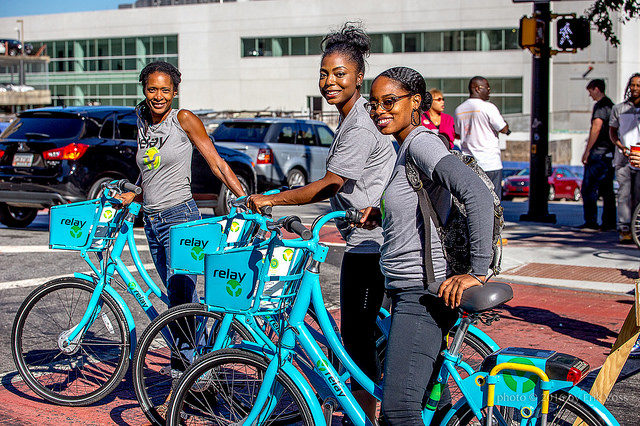The city of Atlanta will spend $5 million during the next two years to triple the number of protected bike lanes and install other infrastructure to slow down cars and make the city safer for pedestrians and bicyclists, Mayor Keisha Lance Bottoms announced this week.
Through the “Safer Streets Across Atlanta” plan, the mayor intends to cut back the number of lanes on certain streets, install plastic bollards and planters on others to take space from cars, and fast-track protected bike lanes — infrastructure that city planners say took way too long and cost way too much to install in the past.
“Bike lanes in Atlanta are a big project,” said Jacob Tzegaegbo, the mayor’s senior transportation policy adviser. “Lanes could take six to seven years and cost millions of dollars.”
The city plans to cut through the red tape, thanks to the creation of its new Department of Transportation, which takes three separate city agencies and puts them under one umbrella to help quickly install necessary traffic-calming measures.
According to the mayor’s office, the crash rate in Atlanta is four times higher than the average in Georgia, and pedestrians are killed in the city at twice the national average.
Still, officials say they know they may face an uphill battle when they try to slow down traffic outside the more-walkable parts of the city such as the downtown area. Officials said they plan to reach out to locals in those areas first, before changes are made.
“Some communities are not as open to bike lanes,” Tzegaegbo said. “So we’ll use feedback to make sure designs are sensitive to the communities’ needs.”
Asked about specific measures that can be taken in more car-friendly areas, Tzegaegbo pointed to yet-to-be determined ways to separate cars from people, adding that there is no “one-size-fits-all” answer.
Rendering of planned new infrastructure were not yet available.
Bicycling advocates were cautiously optimistic about the proposal, claiming it was a step in the right direction, but that the time for planning to make Peachtree City streets safer is over and the time for action is now — even if that means letting activist groups take the bull by the horns.
“We’re asking the city to provide a way for organizations like ours to install interim solutions in partnership with groups already poised to take action,” she said on the group’s website noting that the group was “all planned out.”
“Now’s the time to move the plans to fruition,” she wrote.







